#Historical Places In India & World
Text


They find each other in the foyer, he no doubt coming up to meet her as he often did.
An apple, some fresh eggs. Once he had a chick in his shirt pocket. He would always bring her these little gifts.
She supposed, now, she was bringing him one. At least, she hoped that was how he saw it.
"Morning, Ms. Rao. I was just comin' up to meet you."
"Yes. I thought I would meet you instead." She replied, something nervous making her usually confident smile twitch in the corners.
"Is something wrong? You look like you need to lie down, Latika." Her name was said so sweetly, only shared when they were alone.
"I-" And the words don't come out, all her childish fears, those which she thought she mastered coming up to choke her. "I am pregnant, Lloyd."
Was it shameful that even now, even after all they had shared the fear that he would regret her, leave her alone with not only the child, but, even more frightening, the possibility there wouldn't be one at all. And that this one, this one might take her with it?
But Lloyd Hollowbreast was dropping to one knee, digging for something in his pocket. Her heart hung in her throat.
"I was meaning to give this to you one of these mornings." He laughs a little, nerves showing.
'What a pair we make,' She thought, surprised by the fact she was still even able to think, to process what was happening.
He digs out a ring, obviously made by hand and the sweeter for it.
"My family doesn't usually give rings, but I thought I should do this proper for you; the way you like."
The tears began welling in the corners of her eyes, she didn't even have the heart to tell him she wasn't used to the custom herself.
He shifts his weight, looking up at her, running his tongue over his bottom lip before he asks:
"So Latika, will you marry me?"
She manages a smile, wobbly as it is.
"I will Lloyd."
#cw: miscarriage#cw: pregnancy#cw: death#ts2#sims 2#historical sims#anyway i dont think engagement rings were a thing pre-colonial india but again this doesnt take place in the real world so!#neighborhood: alicel#sim: lloyd hollowbreast#sim: latika rao#alicel- y1w1#homestead challenge#ts2 homestead challenge
4 notes
·
View notes
Text
National Monument of USA The Statue of Liberty
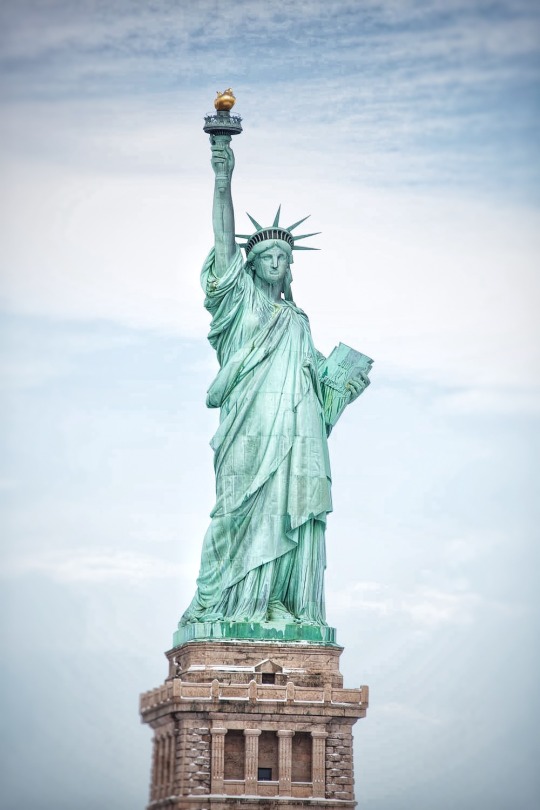
The Statue of Liberty standing proudly in New York Harbor, is a powerful symbol of freedom and hope. Its majestic presence and rich history have made it an iconic landmark known and admired worldwide Read More
#statue of liberty#tourism#places#travel#india#usa travel#best destinations#world tour#historical#landmark
2 notes
·
View notes
Text

India is a country with a lot of different cultures, a long and interesting history, and beautiful natural scenery. It has many places that tourists from all over the world find interesting. Whether it’s amazing buildings or places of worship, India’s tourist spots provide a wide range of experiences. Here, Bright Holidays presents a curated list of seven UNESCO World Heritage sites that encapsulate India’s unique charm.
Bright Holidays provides domestic tour packages that can take you to every one of these UNESCO World Heritage sites.
#india#unesco world heritage#historical sites#tourist places#travel agency in india#travel and tourism#travel agency
1 note
·
View note
Text
A look at Pakistan's historical heritage and world UNESCO side Mohenjo Daro
A look at #Pakistan's #historical heritage and #world #UNESCO side Mohenjo Daro
A thread ⬇️
Standing on the highest brick platform in Mohenjo-daro’s fort district, just a few steps from a second-century Buddhist stupa, it’s impossible not to feel awe at the sheer scale and complexity of the prehistoric city around you. It takes a moment to grasp the fact that what you’re seeing is more than 4,500 years old, one of the oldest—if not the oldest—known settlements in the entire history of…

View On WordPress
#Archaeological Survey of India#archaeologist#Historical places#Indus Valley Civilization#Mohenjo Daro#National Museum#Pakistan UNESCO Site#Priest King#Sindh#UNESCO#UNESCO Site#World UNESCO Site
1 note
·
View note
Text
youtube
#youtube#social media#travel#vacation#nature#landscape#wonderful places#tourisim#world tour#tourist#touringadventure#amazing places#heritage#keralis#india#indian#historical#history#histoire#ancient#kinnporsche la forte#tamilnadu#tamilnet#solo travel#traveler#traveller#travelling#beautiful places#places#adventure
0 notes
Text
জাতীয় স্মৃতিসৌধ, সাভার | Jatiyo Smriti Soudho | Family Tour 2022
জাতীয় স্মৃতিসৌধ, সাভার | Jatiyo Smriti Soudho | Family Tour 2022
জাতীয় স্মৃতিসৌধ, সাভার | Jatiyo Smriti Soudho | Family Tour 2022 National monument of Bangladesh
জাতীয় স্মৃতিসৌধ, সাভার | Jatiyo Smriti Soudho | Family Tour 2022
হ্যালো ভিউয়ারস ওয়েলকাম টু মাই ইউটুউব চ্যালেন রান উইথ নাদমান এ। আজকে আমরা চলে এসেছি মুক্তিযুদ্ধের গৌরব গাথা ইতিহাস নির্ভর জাতিয় স্মৃতিসৌধে। যেটি সাভারের নবীনগর এলাকায় অবস্থিত। পরিবার নিয়ে সবুজ পরিবেশে সুন্দর সময় কাটাতে পারেন…

View On WordPress
#জাতীয় স্মৃতি সৌধ#জাতীয় স্মৃতি সৌধর ইতিহাস#জাতীয় স্মৃতিসৌধ#রান উইথ নাদমান#bangladesh#bangladesh (country)#bangladesh 1971#dhaka#historical places#historical places in the world#historical places in the world list#how to draw national memorial of bangladesh#jatiyo smriti soudho#just travels#national martyrs memorial at savar bangladesh#national martyrs memorial india#national memorial of bangladesh paragraph#national monument bangladesh#run with nadman#savar#savar national martyrs memorial
0 notes
Text


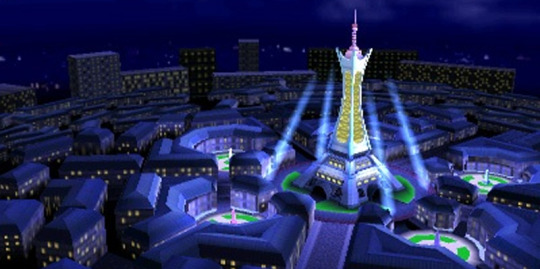
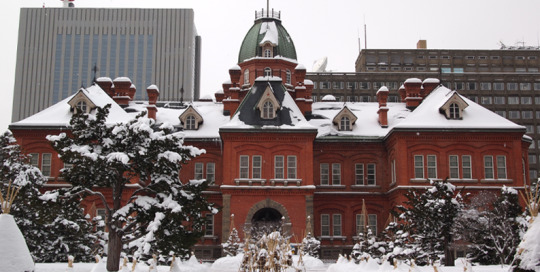

So, with the new legends there's a neat way we can take a guess at some of the time frame. Although it's largely aesthetic and hard to gauge the intended historical parallels of, the not-Eiffel Tower at the center of the city could presumably have been completed in the late 1880s like the real thing. Interestingly that places it pretty concurrent to the construction of the Hokkaido Government building in the 1870s that served as the basis of the Galaxy Team HQ in the first Legends game.
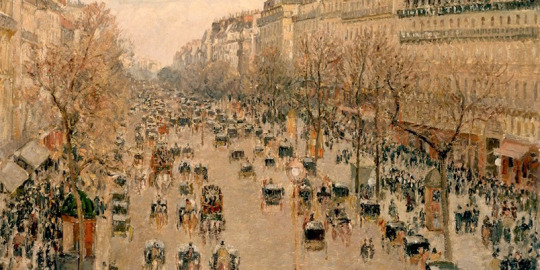
But with the keywords being "urban redevelopment" the setting could only possibly be Haussman's renovation of Paris that took place from the 1850s-1920s. So given that the tower is already standing, that places Legends Z-A between 1889 and 1927.
And I doubt it would play into the setting of a Pokemon game but I think it's neat that it would mean taking place firmly in the 3rd French Republic, as that's not typically the most romanticized period of French history. (Kind of shocking given just how much Japanese pop culture loves to fixate on the Ancien Regime and Rococco architecture.) It's right at the height of the French Colonial empire and their rivalry with the British... Even if they don't address the history directly, certainly not the darker bits, I wonder if we'll see an ancestor of Rose* and some mention of Kalos and Galar's relation as a hint at the Pokemon world's equivalent of India. (Elephant, what elephant...)
*put a pin in that... Well come back to Rose later...


Also I know a lot of the stupid "leaks" that were just running with any/every rumor they could find had been talking about Celebi, despite there being no signs of it in the direct, but it's possible that the Z-A title and the fadethru of the sort of sci-fi looking city diagram into a pencil and parchment one is indicating going back in time --backwards, from Z to A, end to start.
and just so long as I'm just picking at edges of things...


The unknown are an anagram of, "POKEMON PRESENTS"(oh and the SOEYUE one at the end is just "SEE YOU") and the ""confidential"" stamp on the documents likely reads "Gokuhi" as in gokuhi[極秘]: "Top Secret," but the rest of the text doesn't seem to match either Japanese, French, or English,




Hito to POKEMON no kyouzon o yumemite[人と ポケモンの共存を夢見て]: "Dreaming of people and Pokemon's coexistence"
Toshisaikaibatsu hassou MIARE CITY[都市再開発発想ミアレシティ]: "Urban Redevelopment Concept Miare City"
The obvious exception being that redacted text is clearly the romanized MIARE from the Japanese MIARE[ミアレ] and the English CITY, which is the Japanese name for what was localized as "Lumiose."
Curiously the word "Pokemon" is very clearly missing from the passage, and also in both cases there are too few "Galarian" characters for how long the phrases are in any actual language.

and finally, given some of the existing examples of handwritten Galarian in SwSh, I'm guessing the text on the big logo is as i've transcribed into the more standard Galar font, although I'm really uncertain about that second one, and a bit iffy about the big "X"s, but the little cyclone O, the V with the underbar, and the E seem certain enough.
Also there's a logo I know I remember seeing that looks like this one but I can't remember where it is or what it's associated with.... It's the logo on the Macro Cosmos power plant. Not Rose's personal logo with the stylized rose, and not the Cosmos business logo with the big star system orbital ring Cs, but the power plant in Hammerlock where you go to fight Eternatus specifically.
It would be really neat if whatever this organization is was tied back to an ancestor of Rose and Peony and the origins of Macro Cosmos somehow.

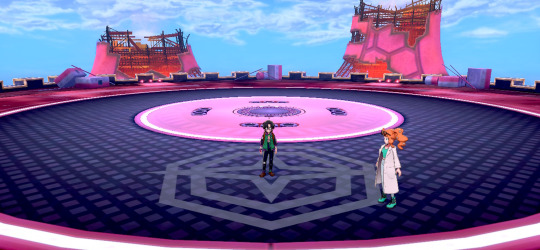
618 notes
·
View notes
Text
Top 10 Historical Places of the World ! 2022
Top 10 Historical Places of the World ! 2022
Top 10 Historical Places of the World ! 10 Must-Visit Historical Places Around the World.
If you’ll travel far and wide to be awed by a UNESCO World Heritage site, make sure you have these major attractions on your list.
The Pyramids at Giza in Egypt. …
The Colosseum and Roman Forum in Italy. …
Stonehenge in the United Kingdom. …
Machu Picchu in Peru. …
Petra in Jordan. …
Delphi in Greece.…
View On WordPress
#best historical places in india#historical#historical places#historical places in india#historical places of the world 2022#historical places world#historical places you didn&039;t know#Machu Picchu#most historical places#most historical places of the world#most historical places of the world 2022#mysterious places#places#top 10 historical places#top 10 historical places of the world#top 10 historical places of the world 2022#tourism#Travel Food Vlogs#travel vlog
0 notes
Note
im asking this out of pure ignorance but I've always wondered how does hinduism handle people who are not hindu? i know Christianity is essentially 'be the right kind of christian or go to hell' (so much as to beleive that Jewish people are literally devils, for example) but i was wondering how hinduism deals w people who are in proximity but not of the same religion. also if a dalit or lower caste person converts from hinduism to another religion, how does that affect thier life and how they're treated? appreciate your answer if u feel like explaining ^__^
it depends, in some parts of the country the non hindu has the same status as the lower caste dalit by default – so exclusion but in most places its a detente where religious and caste endogamy is strictly maintained. housing and employment discrimination is v common. its actually much harder to marry under the special mariage act and violence against interfaith and intercaste couples by their own families is common. in 2023, the muslim is the designated enemy of the state. the christian was fooled by the british and/or money to give up their culture or is literally a foreign agent. if you're looking for a textual answer, the equivalent of the "infidel," there isn’t really one because the streamlining of the canonical religious texts and construction of the hindu is recent. hinduism has aimed to appropriate instead of convert.
in modern india, legally anyone who is not a christian or a muslim is treated as a hindu. you are hindu by default in india to the state, governed by hindu codes for marriage and inheritance. for indigenous tribals it is a matter of coercing their children to feel shame at the (state sponsored but outsourced to private religious groups, love privatisation!!!) residential schools about their animist practices and making them worship the proper gods. for sikhs, jains and buddhists their is marginally more toleration. but they are basically seen as wayward hindu sects. this does change when they're in conflict with the majority in a way that resists "national cohesion" – see sikh pogroms in 1984 and the recent moves against sikhism due to the invocation of khalistan in the farmers protests. when dalits convert to buddhism many right wingers will invoke the spectre of predatory conversions.
since you are supposed to be hindu by default, christians and muslims are then seen as invasive outsiders and conversions are regulated very strictly by many states. it is historically true that christian missionaries brought christianity as part of a broader civilising mission, but imo it says something really depressing about hinduism that its epithets for christians is 'ricebag converts' bc people apparently converted for a bag of rice. islam's foothold in the continent is older, accompanying immigration from the west as well as the sultanate and the mughals. returning these christians and muslims to the fold, or "ghar wapsi" is a major project of the hindutva right. note that india is home to one of the world's largest populations of muslims (~200mil).
lower caste dalits have long converted to christianity and islam but caste violence follows them there anyway. caste may have textual origins in religion and focus on ritual purity but it is a socioeconomic form of subjugation. this means that while still subject to caste violence, dalit christians and muslims will be denied redressal through state protections like legislations against anti caste violence or reservations because those are restricted to hindu dalits.
334 notes
·
View notes
Text
The average American produces 1,704 pounds of garbage per year, roughly three times the global average, according to a new report by the research firm Verisk Maplecroft.
Across 194 countries, the researchers found that the world produces 2.3 billion tons of municipal solid waste each year, which is enough to fill 822,000 Olympic-sized pools. Of this waste, just 16% is recycled, while 46% is disposed of unsustainably in ways that harm the environment.
[...]
Countries like the US and Singapore are reaching their landfill capacity, while countries like China and Malaysia have refused to continue accepting trash exported from Western nations.
Although the United States accounts for 4% of the global population, it’s responsible for 12% of the municipal solid waste that’s created, and historically would ship a lot of trash to other countries.
China and India, meanwhile, account for 36% of the global population, but generate only 27% of all waste.
also according to a lot of studies the majority of garbage in the US is food waste which can 100% be composted and is the most environmentally destructive when sent to a landfill because it creates methane

from this source
America has got a waste problem. An average American produces about 4.40 pounds of garbage per day and approximately three-quarters of a tonne per year. If you are thinking “this can’t possibly be right, there is no way I produce THAT MUCH”, get ready for another blow. The U.S.A holds the record of producing the highest amount of garbage in the world, more than Russia, India, and even China.
All that trash has to end up somewhere and as a result, the 2,000 active landfills in the US are reaching their capacity. What will happen when we run out of the room? Well, let’s ask a better question. What can we do to manage our waste better and prevent a catastrophe?
Overfilled landfills are a big problem. Some states decide to simply burn the landfills, as burning reduces the volume of the trash in the landfill significantly. This frees up a lot of space, but the problem of toxic gasses and fumes being released into the atmosphere persists. Not only do these gasses contribute to climate change, but they can also deteriorate human health and end up costing millions in medical expenses.
On the other hand, simply leaving the landfills as they pose other issues. The chemical and biological reactions taking place in landfills can create a lot of issues as these chemicals leach into the ground and contaminate water that municipalities may extract for use in their water systems. The piles of organic garbage also release harmful methane, a greenhouse gas more 86 times more potent than carbon dioxide. So, what can be done to alleviate these issues?
326 notes
·
View notes
Note
Can you give your thoughts on the general character art design of Hades? It's always seemed kind of off to me and you seem to have good enough media opinions to put the reason why into words
i mean, first of all, i think that they suffer just from being The Greek Gods and therefore just having the most barebones basic designs that those archetypal characters get in pop culture. like look at zeus:
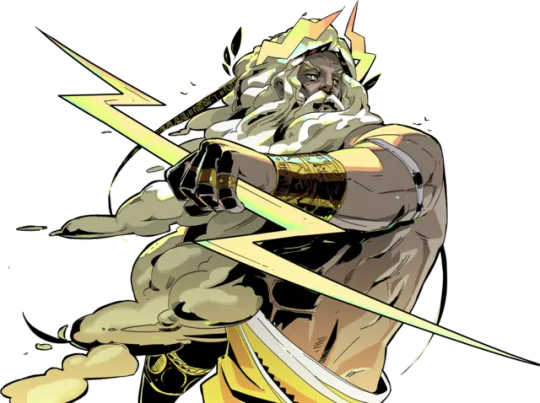
like. this is Zeus. there are some interesting flairs here with the lightning crown and cloud beard but like. It's Zeus. the visual language here is not communicating anything more interesting or unique or vivid than It's Zeus. contrast, like, rukey from pyre:
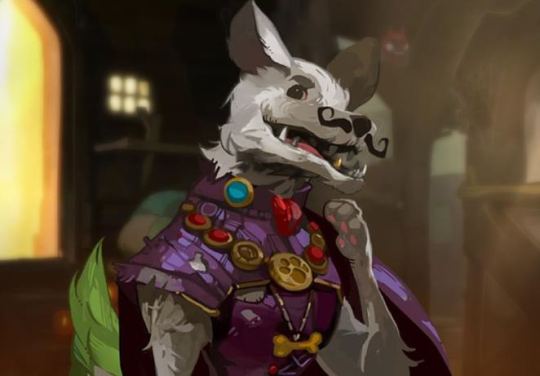
look at how much fucking personality is conveyed by this little freak. the fucking moustache! the fancy little cloak but the messy dog hair. the playful expression, the gold tooth, the glint of cunning in the eye, the raised little paw. you look, at this guy and get an immediate idea of what and who he is.
i also hate how 1. shrinkwrapped and 2. fucking grey and ashy every single character in hades is. like look at zeus's muscles up there this man is fucking dehydrated and like. why does athena look like this
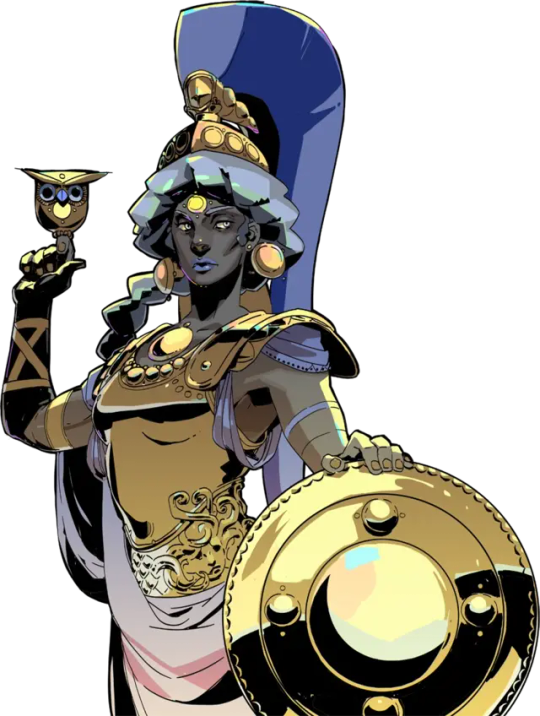
she is grey. she is so fucking grey. this is a vampire. this is a woman made of ash.
furthermore i find what they did with the greek gods wrt to making them a few different races to be a cowardly half-measure. like--the idea they forwarded in interviews that greek gods are 'global' and should represent the whole world are, quite frankly, just bullshit! i dislike this universalization of a mythology that is very very very tied to a particular culture and time and place because it is just another shape of the attempted universalization of the 'Western Canon', the removal of these things from historical place and context to make them abstract ideals that can be imposed upon the whole world because they 'transcend culture' while really they have just been incorporated into a dominant culture.
but, like, most frustratingly--there is a like huge wealth of cultural variety to be found in greco-roman myth. versions of these gods were worshipped in north africa and egypt and west asia and even as far as india. but, like, the commitment to multiethnicisim is purely surface-level, so they don't employ any of the iconography or look into these non-european syncretic depictions of these deities. they just take all their design cues from the tired pop-culture versions of purely greek aesthetics. imagine how fucking interesting the character designs for hades could have been if instead of making dionysus a person of colour and calling it a day, they represented a specifically indo-greek dionysus!

first after the conquests of alexander and once again after the expansion of the roman empire, these sorts of syncretic beliefs flourished throughout the mediterranean. if you really want to write a greek mythology story without a cast of white guys then give me Zeus-Ammon, god dammit!
anyway yeah the fact that all of hades' characters look like they're severely hydrated and their roof just caved in on them is weird and bad and other than that they're for the most part just deeply generic Greek Gods with what feels like very little care or innovation or personality put into their designs compared to characters from transistor or pyre. shomar shasberg and manly tindenstauf each have more unique visual personality than every hades character combined
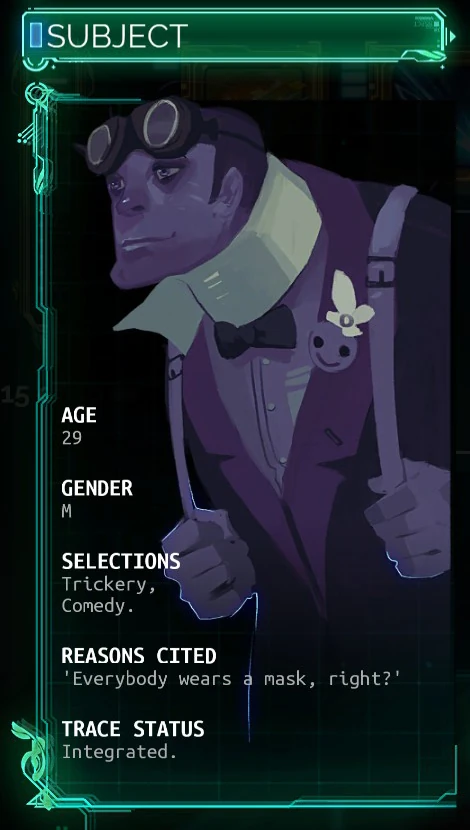
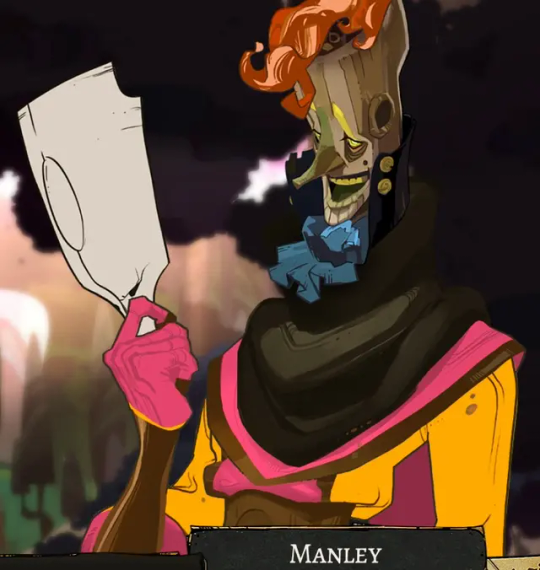
184 notes
·
View notes
Text
George Nakashima
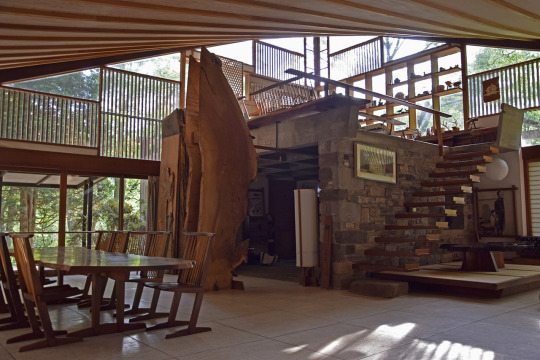




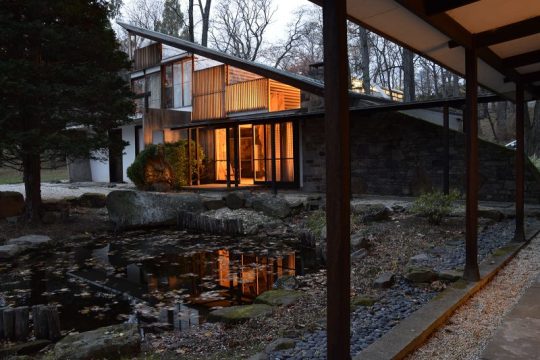
George Nakashima’s Woodworker’s Retreat featured at the University of Pennsylvania

The Nakashima Woodworker’s Retreat “Arts Building” was given to the Nakashima Foundation for Peace in 2001 by George’s widow Marion so that the Foundation would have a permanent home. It features a soaring plywood hyperbolic paraboloid roof cantilevered from stone buttresses over two glass walls, built around a small pond and facing a series of small rooms known as the “Cloister,” harking back to the monastic tradition which so inspired Nakashima. It is used for concerts and events for peace, and houses prototype furniture and archival material, some of which will be turned over to the Michener Museum for research, reference and preservation.
National Historic Landmark nomination for the Nakashima complex
George Nakashima’s Vision
“A while back there appeared a great bole of a tree, a Walnut. It was about five feet in diameter (1.5M) at the small end, about seven (2.1M) at the flare, and twelve (3.6M) long, with extraordinary characteristics. In a small but firm voice the bole asked to be realized; two adjoining slabs opened to make an extraordinary table, roughly twelve feet (3.6M) long by the same dimension wide, weighing almost 1 ton. Gradually a few people became interested in the project and suggested we make six Altars—one for each Continent. It will be a symbol, a token of man’s aspirations for a creative and beautiful peace, free of political overtones; an expression of love for his fellow man. We have become so basically disoriented with our blind faith in science and technology without spirituality, it brought us to our pit of madness.
A symbol is needed—something tangible, like the toe of St. Peter’s statue in the Vatican. This symbol might be the object of a transcontinental or trans-world Peace March. At the end of this pilgrimage, a celebration: A rose or lotus placed on it; songs sung, each in his own tongue; Zen chants so strong; possibly the Day of Existence, a chant to music—spheric in line, spiritual and sad—composed by my ‘brother’ Ivan Wyschnegradsky; Sadhu friends from South India congregating; and monks and others from all over the world who are interested in a higher and deeper consciousness. There is little chance that peace can be achieved politically. There is, at best, a balance of terror; a balance of egos; a balance of demands. Enthusiastic contagion would be useful, as peace the world over is uppermost in our consciousness. It must be a joyous peace, not a fear or absence of war. It is a question of surrender. A surrender to the Divine Consciousness to end in a most beautiful aura of love.”
George Nakashima
October 1, 1984
A Black Walnut Dream: George Nakashima's "Altars of Peace"

The name of George Nakashima is as famous for its contributions to design philosophy as it is for its artistry. As a woodworker, furniture maker, designer, and architect, Nakashima has enough titles to cement his place as the father of the American Craft Movement. But around the world, a separate legacy follows the renowned Japanese-American craftsman: his interest in world peace and humanitarianism through design. Here we explore a project that was particularly close to his heart.



George Nakashima admiring the finished Altar in the Arts Building on the Nakashima compound before sending it to the Cathedral of St. John the Divine, in New York.
#George Nakashima#nakashima#artists#woodworking#carpentry#altars of peace#photography#philosophy#new york#St. John the Divine#University of Pennsylvania
200 notes
·
View notes
Text
Clone High: It's About the Contrast

Something I've seen a lot of is Clone High S2 redesigns. People taking the new characters of S2 of Clone High and changing the designs, usually cause they don't like what we did get. Some of these are neat. I saw one that tries to combine their new designs with their S1 designs from when these characters were incidentals. A lot of them seem to take the personality out of the design. Most of them look hard to animate, but that isn't the point I'm trying to make.
People seem to really dislike these new designs. There are valid design reasons (some are a bit overdesigned, and they definitely clash with the S1 designs) but it just seems people are mad at them in concept. Especially Harriet Tubman. How could they turn Harriet Tubman into... this?
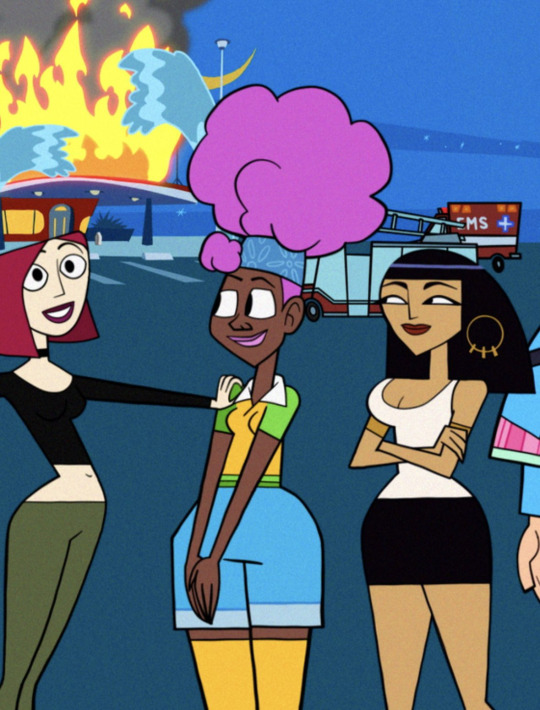
It's outrageous! And yeah, it is. It's supposed to be. That's the joke. In the 20 years since Season 1, the Clone High Fandom has grown and shipped and gossiped and a lot of people have forgotten that the incongruity of the characters is part of the joke. Joan of Arc was not in fact a goth girl who constantly thirsts over tall men. The same goes for several other characters.
Harriet Tubman isn't Harriet Tubman. She shares her DNA but she is decidedly a different person. That's the point of Clone High, the show is less about historical figures interacting in a high school setting and more about how these people might be if they were raised under different circumstances. Ideologically, Clone High is an argument against great man theory.
Gandhi changed the world. But when he isn't born and raised in British controlled India under very specific circumstances, he's just some guy. The same goes for Cleopatra, JFK, Joan of Arc,, Jesus Christ, and yes, even Confucius, Frida Kahlo, and Harriet Tubman. It's circumstances that create people, not people making the circumstances.
Imagine if you had the chance to have a conversation with the real Harriet Tubman. What do you think she would say? How would she act? I'm sure she'd probably be an interesting and nice person, but she wouldn't be a character fit for a wacky animated sitcom. You don't really expect former slaves to be bubbly like that.
It both literally and metaphorically takes the basic DNA of these figures and subverts and modifies their existence through modern society, or rather the tropes of teen dramas. Not just asking what would happen if these people were in high school but if they were ordinary people. Instead of being a hero whose life is in danger, Harriet Tubman is a girl who gossips and whose biggest worry is becoming a basic bitch.
Look at the S2 finale. The board of shadowy figures have assembled their great men and put them in competition. They'll weed out the best of the best to become the great men of the future. And out of about 100 clones, only one actually makes it to the end. Everyone else fails. The one clone who does make it, Joan, is born again into extreme circumstances. Being left for dead by her friends and suffering a psychic break. There is no such thing as great men, just extraordinary situations.
I think this theme of subverting these legendary figures is something that should be kept in mind when talking about the show. It isn't really a show about historical figures, just historically-themed characters. And that's okay. It's very funny when done well! It's a cartoon and it really acts like it. It was never asking to be taken as a serious drama and definitely wasn't asking to be a commentary on historical figures. It simply parodied its contemporary teen dramas a little too well and we got invested in joke characters and everything changed. The S2 writers were in a very unenviable place, and I applaud them for taking things in bold new directions. If you haven't watched S2 or even just watched a few episodes, I'd recommend giving it another chance. It's not perfect but it gets better as it continues. It has its own distinct feel and style while still understanding what "the point" of the original was.
Also Kahlopatra for life ❤️ 🧡 💛 💚 💙 💜

190 notes
·
View notes
Text
Most books on the Bengal delta begin by describing it as “riverine,” [...] the land is the product of fluvial action [...]. [I]n thinking about Bengal, one tends to imagine the ricepaddy fields [...]. It was not so all the time; Bengal was never really a land of farming [...]. Traveling through Bengal in the eighteenth century, the French traveler Orme saw a highly sophisticated water-based economy - the blessing of rivers - irrigated [...] by the monsoon rains and annual flooding. [...] The rivers were not just channels of water; they carried a thriving trade, transporting people and goods from one part of the delta to another. Today, Bengal is generally seen as comprising lush green rice paddies [...]. Rivers are often presented as causing immense grief [through seasonal flooding] [...]. Clearly, there is a mismatch here. [...] How (and when) did Bengal’s social milieu transform from water-based to land-based? [...] Bengal’s essential character as a fluid landscape was changed during the colonial times through legal interventions that were aimed at stabilizing lands and waters, at creating permanent boundaries between them, and at privileging land over water, in a land of shifting river courses, inundated irrigation, and river-based life.
Such a separation of land and water was made possible not just by physical constructions but first and foremost by engineering a legal framework that gradually entered the popular vocabulary. [...] BADA, which stands for the Bengal Alluvion and Diluvion Act, [was] a law passed by the colonial British rulers in 1825, following the Permanent Settlement of 1793. [...] The environment of Bengal can be described as hybrid, where the demarcation between land and water is neither well-defined nor permanent. Nature here represents a borderless world, or at best one in which borders are not fixed lines on the ground demarcating a territory, but are negotiated spaces or zones. Such “[...] spaces” comprise “not [only] lines of separation but zones of interaction…transformation, transgression, and possibility” (Howitt 2001, 240).
---
Current boundaries of land and water are as much products of history as nature and the colonial rule of Bengal played a key role in changing the ideas and valuations of both. [...] The debate on what constituted productive and unproductive uses of land preceded the application of English property law not only to establish permanent zamindari (a common term for the system of landlordism) settlement of land tenure in India, but also to valorize land in what had essentially been a land-water hybrid environment. The colonial land revenue system, by seeing land as more productive (being able to yield revenue) and useful, began the long historical process of branding the rivers of Bengal as uncivil and in need of control. [...] The problem with deltaic land is its non-permanent nature, as silt is stored by rivers: rivers do not always flow along a certain route [...] The laws that the colonial British brought to Bengal, however, were founded upon the thinking of land as being fixed in place. [...]
---
Experiments to fine-tune the land-based economy began in 1760 when Bengal, and its ceded territories, came under the East India Company rule. [...] To entrench the system, the Permanent Settlement of 1793 created zamindars (or landlords) “in perpetuity” - meaning for good. The system was aimed at reducing the complexities of revenue collection due to erratically shifting lands and unpredictable harvests in a monsoon-dependent area [...]. Alarmed at the possibility of dismemberment of their estates, the zamindars decided to bind tenants to the same conditions to which they themselves were bound by the colonial government, and one of their actions was to create patni tenures or perpetual leases. [...]
It also meant that the right to collect rent from the tenants, often through the use of force, devolved to the lower layers, making the upper-layer zamindars more of a juridical rather than a real social entity in the eyes of the peasants. The patnidars, finding how much trouble this arrangement took off their own back, created dar-patnis or patnis of the second degree [...]. The dar-patnis created se-patnis or patnis of the third degree. The East India Company, therefore, had to legalize, through Regulation VIII of 1819, the creation of such formations, thus giving a de jure recognition post facto [...].
The regulation, although innocuous and simple, was of great historical potency: it became the key that unlocked the door to environmental and socio-economic changes of unparalleled magnitude. From a riverine community, within a hundred years, Bengal was transformed into a land-based community. [...]
---
The meaning of property also changed as a result of this law: the cultivators began to lose the right to occupy the land that they had enjoyed since ancient times because the colonial British had enumerated the characteristics of the zamindari property as an absolute right of proprietorship in the soil [...].
[T]he Company then began to contemplate the problematic issue of legalizing the fictional entities of chars [...]. The law that was created for this purpose -- and still rules the rights of ownership of charlands -- is the Bengal Alluvion and Diluvion Regulation Act (BADA) of 1825. [...] BADA was meant to establish a set of rules to guide the courts to determine the claims to land “gained by alluvion” or accretion, and the resurfaced land previously lost by diluvion or erosion. Even if one takes it for granted that chars are technically non-land in the sense that they exist within river banks, the difficulty remains that when a piece of land is lost to bank erosion, it may not arise in exactly the same location or arise at all within the foreseeable future. This means the owner has no certainty that they will get it back when it resurfaces or when another char rises nearby. [...] Thus, the key to establishing land rights in the court of law remained the payment of rent, even on diluviated land. [...] Such a rule will, however, not be applicable if a river suddenly changes its course and separates a considerable piece of land from one to join it with another farm, but without destroying the identity of the land so removed -- thus preventing legal recognition. New accretions in large navigable rivers would be the property of the state [...].
---
All text above by: Kuntala Lahiri-Dutt. “Commodified Land, Dangerous Water: Colonial Perceptions of Riverine Bengal.” In: “Asian Environments: Connections across Borders, Landscapes, and Times.” Edited by Ursula Munster, Shiho Satsuka, and Gunnel Cederlof. RCC Perspectives, no. 3, 17-22. 2014. [Bold emphasis and some paragraph breaks/contractions added by me.]
#summary of how britain took over bengal#calcutta#sundarbans#abolition#ecology#imperial#colonial#mangroves
247 notes
·
View notes
Text
JTTWR Story Idea Directory
I was influenced by @digitalagepulao's recent post to list my own collection of story ideas.
These are set in the Buddo-Daoist disc world system of the original novel.
1) The Origin of Sun Wukong
This provides three fictional origins for the Monkey King based on my past research. He is ...
The spiritual offspring of supreme ape immortals who have served as teachers of countless mortal and divine beings, the later including the Buddha and Master Subodhi. The couple rebels against the heavenly hierarchy for failing to keep an ancient promise.
The offspring of an ancient evil who intentionally bred him to destroy the gods.
A former hot-tempered, Vajra warrior-like Bodhisattva who is exiled from paradise for killing a being who seemingly offended the Buddha. He is punished to ten lifetimes as a figure of great strength who is continually bested and forced by circumstances to protect something or someone weaker than him.
Each origin has pros and cons.
2) Immortal Warriors and Shaolin Monks
Master Subodhi's mountain is the training ground for an immortal monastic army similar to Shaolin. Monkey gains combat experience as a monk soldier.
3) The REAL Reason Subodhi Expels Sun Wukong
Sun's much, much older spiritual brothers and sisters attack him out of jealousy for quickly climbing the ranks of the immortal monastic army. Forced to defend his position, Monkey's anger drives him to take on a monstrous, 100,000-foot-tall cosmic form to defeat his opponents. Subodhi fears Sun's limitless potential and great anger will lead him down the path of villainy, so he uses the pine tree incident as an excuse to expel him.
4) The Reason for Sun Wukong's Rebellion
Subodhi warns Monkey to protect himself when mastering the "Multitude of Terrestrial Killers" (i.e. the 72 changes) because said deities are considered baleful stellar gods who bring bad luck and disease. But the Terrestrial Killers exploit a chink in his spiritual armor and feed him small suggestions that have compounding effects on his personality, making him increasingly egotistical and combative. This eventually leads to his rebellion against heaven.
These are set on our Earth.
1) Sun Wukong vs Heracles/Hercules
Heracles, the Buddha's protector, is called in place of Erlang to end Monkey's rebellion. After the latter attains Buddhahood at the end of the journey, the Tathagata asks the son of Zeus to escort Sun through the Greek world system.
See the 07-08-22 update (refer also to section 3 for background info):
2) A Realistic Retelling of Journey to the West
The story follows the itinerary of the historical monk Xuanzang, and the various episodes from the original novel take place both on the way to and coming back from India. The disciples are acquired during the initial journey; however, their order is reversed—Sha, Zhu, and then Sun.
The past punishments of the disciples are still the same. But Monkey's history is changed because Taoism didn't exist in ancient India. Instead of becoming an immortal, he is a Hindo-Buddhist rishi who rebels against heaven.
See updates here and here.
#Sun Wukong#Monkey King#Journey to the West#JTTW#Zhu Bajie#Zhu Wuneng#Sha Wujing#Sha monk#Sandy#Pigsy#Tripitaka#Xuanzang#alternate universe#lego monkie kid#buddhism#taoism#daoism#Hinduism#Chinese mythology#Hindu mythology#Buddhist mythology#Greek mythology#Hercules#Heracles#story ideas
87 notes
·
View notes
Text
Books to read in autumn
Historical novels
Wolf Hall by Hilary Mantel: England in the 1520s
The Pillars of the Earth by Ken Follett: Building the most splendid Gothic cathedral the world has ever known
Outlander by Diana Gabaldon: A back-in-time Scottish romance
Company of Liars by Karen Maitland: A novel of the plague in the year 1348
The underground railroad by Colson Whitehead: Enslavement of African Americans through escape and flight
The God of small things by Arundhati Roy: A family drama in the 60s located in India
The Diary of a Young Girl by Anne Frank: A powerful reminder of the horrors of world war II
Fantasy
A Game of thrones by George R. R. Martin: A Fantasy epic run by politics, strong families, dragons
Red rising by Pierce Brown: A dystopian science fiction novel set in a future colony on Mars
Babel by R.F. Kuang: Student revolutions, colonial resistance, and the use of language and translation as the dominating tool of the British empire
Legends & Lattes by Travis Baldree: A fresh take on fantasy staring an orc and a mercenary
Jade City by Fonda Lee: A gripping Godfather-esque saga of intergenerational blood feuds, vicious politics, magic, and kungfu
Spinning Silver by Naomi Novik: A tale of hope and magic, with brave maidens and scary monsters
The Atlas six by Olivie Blake: A dark academic sensation following six magicians
Mysteries & Horror
The Gathering Dark: An Anthology of Folk Horror by various authors: Short stories perfect for the Halloween mood
Sorrowland by Rivers Solomon: The story of Vern, a pregnant teenager who escapes the cult Cainland
The Weird and the Eerie by Mark Fisher: A noted cultural critic unearths the weird, the eerie, and the horrific in 20th-century culture through a wide range of literature, film, and music
Holly by Stephen King: Disappearances in a midwestern town
Vampires of El Norte by Isabel Cañas: Supernatural western
The good house by Tananarive Due: A classic New England tale that lays bare the secrets of one little town
Nonfiction
Ghostland: An American History in Haunted Places by Colin Dickey: The trail of America's ghosts
What moves the dead by T. Kingfisher: A gripping and atmospheric retelling of Edgar Allan Poe's classic "The Fall of the House of Usher
South to America: A Journey Below the Mason Dixon to Understand the Soul of a Nation by Imani Perry: A journey through the history, rituals, and landscapes of the American South—and a revelatory argument for why you must understand the South in order to understand America
All the living and the dead by Hayley Campbell: An exploration of the death industry and the people―morticians, detectives, crime scene cleaners, embalmers, executioners―who work in it and what led them there
Gödel, Escher, Bach: An Eternal Golden Braid by Douglas R. Hofstadter: Gödel, Escher, Bach is a wonderful exploration of fascinating ideas at the heart of cognitive science: meaning, reduction, recursion, and much more
#autumn mood#writing#inspiration#history#autumn#fall season#autumn leaves#autumn aesthetic#dark fantasy#dark academia#books and reading#books#books & libraries#bookstagram#currently reading#booklr#reading#book recommendations#writingcommunity#creative writing#writeblr#fall vibes#october#autumn vibes#historical novel#fantasy#fairy tale#fantasy reader#nonfiction#mystery
95 notes
·
View notes